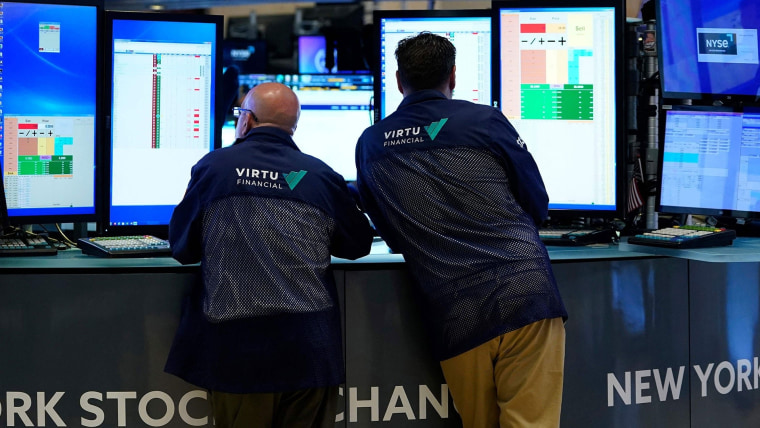The S&P 500 fell again on Thursday, pushing the average to the brink of a bear market, as investors continued to dump equities on fears Federal Reserve rate hikes to fight rapid inflation will tip the economy into a recession.
The broad market index shed 0.6 percent, putting it 19.5 percent below its intraday record reached in January. It also sits a little more than 19 percent below its record closing level. A close of 20 percent or more below its all-time high would mark a bear market, its first since the March 2020 pandemic sell-off.
The Dow Jones Industrial Average fell 317 points, or 1.1 percent, a day after it experienced the biggest one-day drop since 2020. The Nasdaq Composite was flat.
“The main takeaway for investors is to brace for extended volatility,” said Greg Bassuk, CEO at AXS Investments. “We believe that volatility is going to be the investor narrative for the balance of Q2, and frankly, you know, for the balance of 2022.”
On Wednesday, the Dow fell more than 1,100 points, marking its worst sell-off in nearly two years. The S&P 500 also suffered its worst one-day decline since June 2020, losing about 4 percent, and the Nasdaq Composite fell 4.7 percent.
Those losses were driven in part by back-to-back quarterly reports from Target and Walmart that showed higher fuel costs and restrained consumer demand hurting results amid the hottest inflation in decades. Even after a 24 percent drop on Wednesday, Target shares were lower again Thursday by 2 percent.
“The sharp sell-off in these companies (as well as other goods/consumer companies this quarter) shows that inflationary pressures are finally having an impact on earnings,” Maneesh S. Deshpande, head of U.S. equity strategy at Barclays, said in a Thursday note. “Despite heightened inflation for a better part of a year, [S&P 500] margins and forward earnings have remained resilient, which no longer seems to be the case.”
Cisco was the latest major company to plunge on results with the tech bellwether down 12 percent Thursday. Cisco said after the bell Wednesday that quarterly revenue fell short of analysts expectations and it warned revenue would disappoint in the current quarter.
Stocks have been under pressure all year with investors first pivoting away from highly-valued tech stocks with little profits. But the sell-off has since spread to more sectors of the economy, including banks and retail, as growing fears of a recession spooked investors.
“The issue now is there really appears to be nowhere to hide,” wrote Jonathan Krinsky, chief market technician with BTIG. On Wednesday, “they came for consumer names, but they still sold beaten down growth. In other words, money is rotating into cash instead of between different sectors.”
“While it won’t be a straight line, [this] is confirmation that selling rallies in bear markets is much easier than buying dips,” Krinsky said.
Investors remained concerned that aggressive action by the central bank to tamp down inflation would spark a steeper downturn. During a Wall Street Journal Conference on Monday, Federal Reserve Chair Jerome Powell reiterated his comments that “there won’t be any hesitation” to bring down inflation.
Several Wall Street strategists issued some dire forecasts for stocks should the Fed’s rate increases tip the economy into a recession. GDP in the first quarter decreased at a 1.4 percent rate so some slowing is already being seen.
Deutsche Bank cut its official target for the S&P 500 overnight, but said a recession would bring even bigger losses.
“In the event we slide into a recession imminently, we see the market selloff going well beyond average, i.e., into the upper half of the historical range and given elevated initial overvaluation, -35% to -40% or S&P 500 3000,” wrote Binky Chadha, Deutsche Bank’s chief global strategist in a note.
Meanwhile, U.S. weekly jobless claims rose to 218,000 for the week ending May 14, the Labor Department said Thursday, the latest hint that economic growth is slowing.
The Dow has declined for seven straight weeks and is down 14 percent in 2022. The Nasdaq is down 27 percent this year. The S&P 500 has lost 18 percent.
Sarah Min contributed reporting.
Source: | This article originally belongs to Nbcnews.com










